Diving into the historical trove that lies along the banks of the Thames is no small feat. Yet, when you’ve got a local expert leading the way, the hunt for hidden gems becomes far more accessible. From ancient coins to centuries-old clay pipes, the foreshore of London’s iconic river is a treasure trove waiting to be explored. Whether you’re a seasoned beachcomber or a curious first-timer, joining a guided Thames mudlarking adventure promises an unforgettable glimpse into the city’s captivating past. Who knows what captivating stories might surface as you sift through the sands?
Key Points

- Thames beachcombing, or mudlarking, allows visitors to explore the River Thames foreshore at low tide and unearth centuries-old artifacts.
- Participants can expect to discover a range of fascinating finds, such as clay pipes, pottery fragments, and even ancient coins, with the guidance of a local expert.
- The activity provides a unique opportunity to engage with the rich cultural heritage of the River Thames and gain a deeper appreciation for London’s history.
- To fully participate, visitors must have a certain level of fitness to navigate the uneven terrain and engage in activities like bending, squatting, and walking for extended periods.
- The group size is capped at 15 to ensure an intimate and personalized experience, allowing the guide to offer attentive assistance and in-depth historical insights.
It's also worth checking out some other tours and experiences nearby.
Overview of Thames Beachcombing
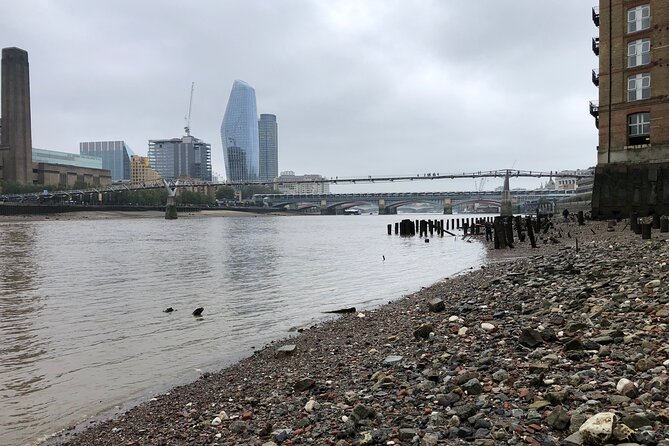
Thames beachcombing, also known as mudlarking, is a hands-on activity that allows visitors to explore the foreshore of the River Thames at low tide, unearthing centuries-old artifacts, ceramics, and other objects washed up by the waters.
It’s an exciting way to discover the hidden history of the city, with a local guide on hand to help identify and provide context for the fascinating finds.
Whether you’re a kid or an adult, Thames beachcombing offers a unique opportunity to get up close and personal with the river’s rich past.
From clay pipes to pottery fragments, each treasure trove reveals a story waiting to be uncovered.
What to Expect During the Activity
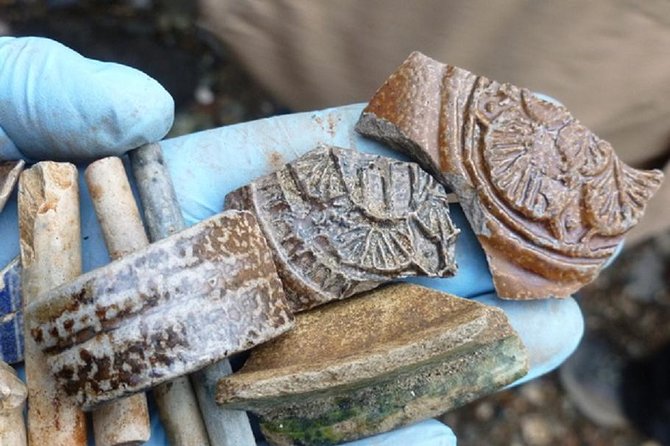
Participants can expect a thrilling 1.5-hour journey of discovery along the river’s edge, where they’ll scour the shoreline for washed-up relics from the past.
With the guidance of a local expert, they’ll uncover an array of fascinating finds, from delicate ceramic shards to sturdy clay pipes, each item brimming with its own unique story. The guide will help identify the artifacts and share captivating historical insights.
Participants can look forward to:
- Stumbling upon unexpected treasures, like ancient coins or ornate jewelry pieces.
- Gaining a deeper appreciation for the river’s rich cultural heritage.
- Collaborating with fellow beachcombers to unearth hidden gems.
It’s an immersive experience that’ll leave participants with a newfound connection to the Thames and its wondrous past.
Inclusions and Meeting Details
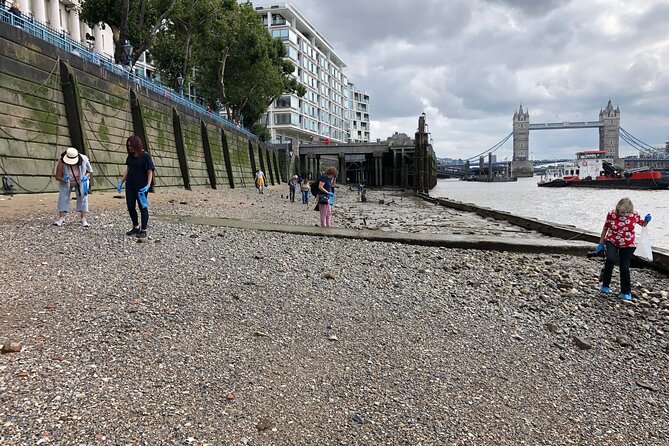
A local guide accompanies beachcombers, providing gloves and plastic bags to safely collect any discovered treasures.
The meeting point changes monthly, with details shared upon booking – though the start and end locations always remain the same.
Exploring the River Thames’ foreshore at low tide is a hands-on adventure, uncovering centuries-old artifacts, ceramics, and other objects washed up by the waters.
Depending on the tide and weather, the guide may point out clay pipes, pottery fragments, tiles, and more, offering historical insight into each unique find.
Whether you’re a kid or adult, this activity promises to be a unique and engaging way to experience the Thames’ rich history firsthand.
Cancellation and Accessibility Policies
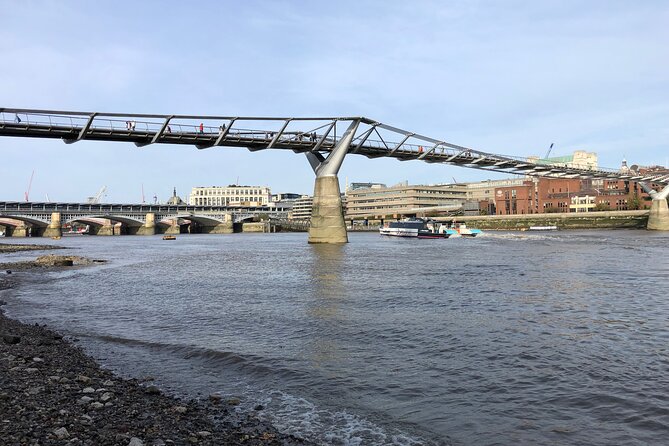
The cancellation policy’s a breeze – full refunds if booked activities get nixed a day in advance.
But the experience ain’t for everyone, as it’s not wheelchair-friendly and not recommended for those with back troubles or expecting mothers. To get the most out of the Thames beachcombing, you’ll need a certain level of fitness.
The group size is capped at 15 to keep things intimate, and the whole shebang’s subject to the whims of the weather. So keep an eye on the forecast and pack accordingly.
Whether you’re an avid mudlarker or a first-timer, this unique opportunity to uncover history along the Thames is sure to be a blast.
Artifacts and Historical Context
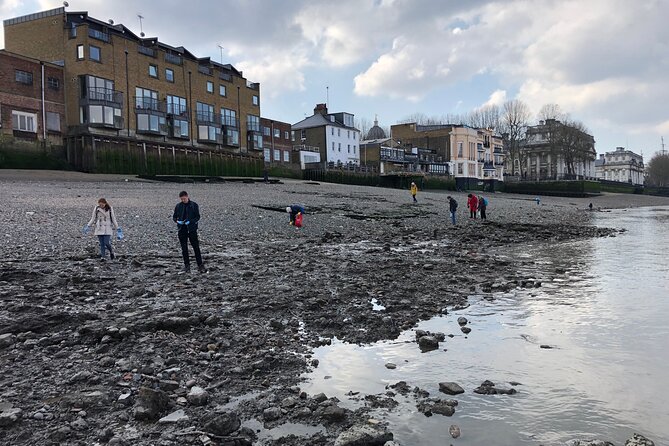
Along the muddy banks of the Thames, a treasure trove of artifacts awaits eager beachcombers. From centuries-old clay pipes to shards of vibrant pottery, these discarded remnants hold captivating tales of London’s rich history. The guide’s trained eye helps uncover the stories behind each find, transporting visitors on a journey through time. Unearthed objects range from the practical to the peculiar, each offering a glimpse into the daily lives of Londoners past.
| Artifact | Historical Significance |
|---|---|
| Clay Pipes | Smoked by 17th-19th century Londoners |
| Delft Tiles | Decorated ceramic tiles used in fireplaces, floors |
| Leather Shoes | Worn by a range of Londoners, from royalty to commoners |
| Bone Buttons | Fastened clothing of the working class |
| Glass Bottles | Contained everything from medicine to gin |
Minimum Fitness Requirements
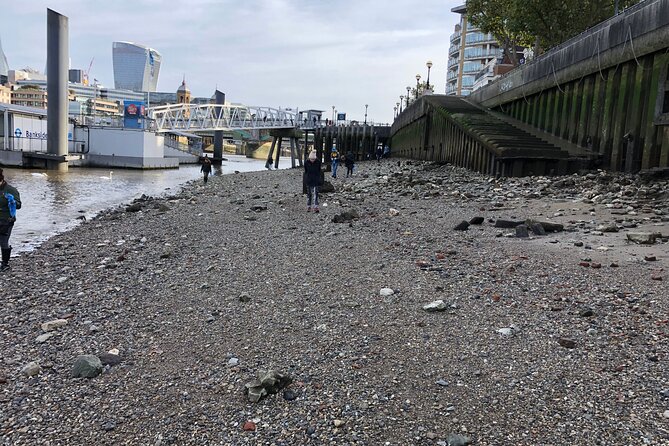
Thames beachcombing requires a moderate level of physical fitness. Participants must be able to safely navigate the uneven, sometimes slippery, terrain of the riverbanks. Sturdy footwear is a must, as one could encounter sharp objects or unstable ground during the exploration.
While the activity is open to all, there are a few important considerations:
- Participants should be able to walk for up to 1.5 hours while bent over, searching the foreshore.
- Bending, squatting, and kneeling are common movements during the activity, so a reasonable level of flexibility is required.
- The muddy banks can be challenging, so a good sense of balance is helpful.
Maximum Group Size
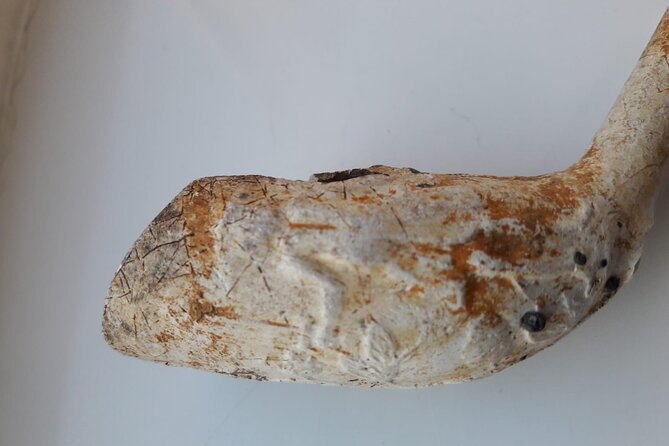
A maximum of 15 travelers per group ensures an intimate and personalized Thames beachcombing experience.
The small group size allows the guide to provide attentive assistance, share in-depth historical insights, and ensure everyone has ample space to explore the diverse treasures along the riverbanks.
With fewer people, you won’t feel lost in the crowd as you sift through the mud and sand, uncovering centuries-old artifacts that tell the story of London’s vibrant past.
The guide can dedicate more time to each participant, helping them identify unique finds and appreciate the significance of their discoveries.
This cozy group dynamic fosters a sense of camaraderie and wonder as you embark on an unforgettable journey of historical exploration.
Weather Conditions Impact
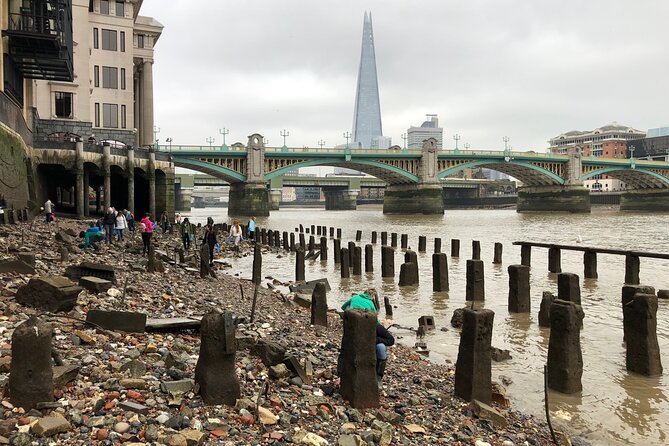
Weather can certainly impact the Thames beachcombing experience. Sudden downpours or blustery winds might force the tour to be rescheduled, as the slippery, muddy terrain becomes treacherous in inclement conditions.
On the flip side, a crisp, sunny day allows participants to fully enjoy the activity, meticulously scouring the shoreline for hidden gems.
The guide keeps a close eye on the forecast, ready to adapt the itinerary if needed to ensure everyone’s safety and maximize the chances of unearthing fascinating historical artifacts.
The guide considers several factors when monitoring the weather:
- Tide levels and potential flooding
- Wind speed and direction
- Precipitation predictions
Here's a few more nearby tours and experiences we think you'll like.
Frequently Asked Questions
What Types of Artifacts Can I Expect to Find?
On a Thames beachcombing excursion, one can expect to uncover all sorts of intriguing finds – everything from centuries-old clay pipes and pottery shards to mysterious tiles and other peculiar objects washed up by the river’s currents.
Can I Keep Any Artifacts I Discover?
Participants are generally allowed to keep any artifacts they discover during the activity. However, they must follow the guide’s instructions and local regulations, as some items may be considered historical treasures that need to be reported or preserved.
Is There a Particular Tide or Time of Day That Is Best?
The best time to go beachcombing is during low tide when more of the shoreline is exposed. Experienced guides recommend checking the tide tables and aiming for times around sunrise or sunset when the light is best for spotting hidden treasures.
What Safety Precautions Should I Take?
When beachcombing, it’s important to wear sturdy shoes, gloves, and be cautious of slippery surfaces and wildlife. Watch your step and keep an eye out for any potentially hazardous objects that may have washed up on shore.
Are There Any Restrictions on Taking Photos?
Photographers are welcome to snap away during the Thames Beachcombing tour, but they should be mindful not to disturb or trespass on private property. The guide can offer tips on getting the best shots of the unique riverside finds.
Not for you? Here's more of our most recent tour reviews happening neaby
- Londons Top Attractions: Half-Day Tour
- Combo Ticket: Madame Tussauds, London Eye & London Dungeon
- London: Soho Rock and Roll Walking Tour
- Christmas Lights Bike Tour of London
- London Heathrow Airport Transfer
- Luton Airport – To & From Central London – Meet & Greet
- Skip-The-Line Hamptoncourtpalace Guided Day Trip From London
- The Changing of the Guard – Exclusive Guided Walking Tour
- London: Forbidden Nights Male Strip Show and After-Party
- Private Christmas Lights Taxi Tour With Pick up
- Downton Abbey TV Locations and Blenheim Palace Tour From London
- Palaces, Parliament & Power: Londons Royal City
- London Witches and History Walking Tour
- London Outdoor Escape Game: Queen & Freddie Mercury
- London: Direct From Graceland: Elvis & Afternoon Tea & Wine
Recap
Thames beachcombing is a thrilling way to uncover London’s hidden past. Combing the shoreline, you’ll discover centuries-old artifacts that offer a glimpse into the city’s rich history.
With expert guides and fellow treasure hunters by your side, you’ll gain a deeper appreciation for the River Thames and the stories it holds. It’s an adventure not to be missed, whether you’re a history buff or simply seeking an engaging outdoor activity.






